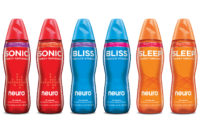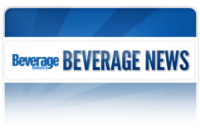Thirty years ago, many consumers had a negative perception OF buying food at a gas station. Case in point, in the 1983 film “National Lampoon’s Vacation,” Chevy Chase’s character, Clark Griswold, says, “I’m so hungry I could eat a sandwich from a gas station.” Although that joke was funny at the time, it’s less humorous today because gas stations offer some high-quality food now, says Jeff Lenard, vice president of strategic industry initiatives for the National Association of Convenience Stores (NACS), Alexandria, Va.
In actuality, experts estimate that more than half of U.S. consumers now shop foodservice offerings in convenience stores, said Susan Viamari, editor of Chicago-based Information Resources Inc.’s (IRI) Times & Trends, in a June webinar on convenience stores. Beverages play a role in the segment’s success with 19 percent of consumers saying they shop foodservice at convenience stores because they like the selection of fountain beverages, she added.
In 2012, foodservice accounted for nearly 16 percent of in-store convenience store sales, making it the second most prominent category next to tobacco, according to the NACS State of the Industry survey powered by its wholly owned subsidiary CSX. Within this segment, sales of cold dispensed beverages grew 11.3 percent, it added.
Tobacco, beer and packaged non-alcohol drinks always have been drivers of the convenience store channel, but now stores are experiencing a renewed or increased interest in foodservice, says Jackie Gray, director for Willard Bishop, Barrington, Ill.
“Instead of just focusing on packaged beverages, there’s a lot of focus on dispensed beverages, and coffee is one of the things that we are seeing tremendous growth in,” she says.
Hot coffee made up approximately 13 percent of beverage sales last year, Gray notes. Because of the importance and popularity of the morning occasion in convenience stores, the channel now is competing with companies like Seattle-based Starbucks Coffee Co., Oak Brook, Ill.-based McDonald’s, and Canton, Mass.-based Dunkin’ Brands Group Inc.’s Dunkin’ Donuts.
“Certainly [convenience stores] have an opportunity to really present a good coffee offering at a reasonable price, and it is a great traffic driver for the morning beverage,” Gray says.
Beverage breakout
Nevertheless, packaged non-alcohol beverages, such as carbonated soft drinks, energy drinks, water and tea, still play a large role in the convenience store market. Packaged drinks were the third most prominent category for the channel in 2012, accounting for 14.7 percent of in-store sales, the NACS survey reported. Beer made up 7.6 percent of total in-store sales, and liquor increased in sales by 11.6 percent, it added.
Looking at beverage sales alone, beer made up approximately 28 percent of sales, and alternative beverages, such as energy drinks and shots, accounted for 14 percent of the segment’s sales, Willard Bishop’s Gray says.
Energy drinks have been the standout category with unit sales growth of 56.4 percent from 2008 to 2012, IRI’s Viamari says. Sports drinks, beer and hard cider, carbonated beverages, and bottled water also made up the largest in-store categories ranked by dollar sales from 2008 to 2012, she said during IRI’s convenience stores webinar. Sports drinks were up 16.4 percent in dollar sales, and beer and hard cider were up 9.1 percent in dollar sales. However, even though carbonated beverages were up 0.4 percent in dollar sales, they declined
1.2 percent in unit sales. Similarly, bottled water dollar sales were up 2.9 percent, but unit sales were down 3.1 percent during the time frame, she said.
Many of the fastest-growing beverage categories, however, reflect a trend toward health and wellness. Weight control and nutritional liquids and powders increased 146.2 percent in unit sales; shelf-stable canned juices grew 104.9 percent; shelf-stable non-fruit drinks increased 65.1 percent; and ready-to-drink coffee and tea grew 47.4 percent from 2008 to 2012, Viamari reported during the webinar.
“More than two-thirds of consumers are trying to eat healthier, but generally convenience stores index lower than the industry average on healthier options,” Viamari says. “Convenience store marketers must develop a wellness strategy. The strategy must be based on the needs and wants of key shoppers and be tailored at the store level.”
Also among the fastest-growing categories, wine and spirits grew
46.3 percent and 42.6 percent in unit sales, respectively, from 2008 to 2012, she added during the webinar.
Overall, the convenience store channel reached record sales of $700.3 billion last year, with in-
store sales increasing 2.2 percent to $199.3 billion, NACS reported. IRI’s Viamari noted similar growth, reporting that the channel grew
2.4 percent in dollar sales and
1.2 percent in unit sales in 2012.
“The channel is benefiting from an expanding store population and its ability to accommodate consumers’ desires for quick and easy on-the-run food and beverage options, often with the added benefit of fueling up the automobile at the same time,” Viamari says.
Prime for product testing
In addition to the demand for immediate consumption, convenience store shoppers are occasionally looking for sampling opportunities, NACS’ Lenard says.
“Convenience stores also are probably the best place to sample a new product than any other channel because you can buy a single item as opposed to other channels where you have to buy a four-pack, a six-pack, a case or some other bigger volume,” Lenard says.
The size of convenience stores also bodes well for sampling, he notes. “The average convenience store model used to be a 40-by-60-foot store,” he explains. “If you think about that as the model — they have gotten a little bigger — if you’re standing in the middle of the store, you’re really no more than
30 feet from any other product in the store, so the idea that you can do single-serve and the idea that you don’t have to navigate aisle after aisle plays very well to sampling and also for beverage manufacturers to look at our channel to debut new products and new concepts.”
For instance, Santa Monica, Calif.-based Red Bull USA launched its Editions flavored energy drinks exclusively in 7-Eleven stores late last year. The Dallas-based convenience store chain also exclusively debuted Plano, Texas-based Dr Pepper Snapple Group’s Snapple Lemon Daze lemonades in participating stores this summer.
“7-Eleven wants all of its potential customers to know that we are working to bring new, exciting and great-tasting products to market that are not available elsewhere,” said 7-Eleven Executive Vice President Jesus Delgado-Jenkins in a statement.
The focus on variety within convenience stores also might be impacting other channels such as grocery stores, says Jonas Feliciano, beverage industry analyst for Euromonitor International, Chicago.
“There’s this diversification happening across American beverage consumption where we’re seeing segmentation throughout different categories where a family is choosing multiple beverages as opposed to one specific drink that the entire family is consuming,” he explains. “That has a lot to do with the variety that convenience stores have offered and have exposed consumers to.”
Merchandising madness
Predicting that segmentation and product diversity will continue to increase, Feliciano suggests that convenience store operators put together a merchandising plan to accommodate these various products and categories. For instance, Purchase, N.Y.-based PepsiCo launched Kickstart by Mountain Dew earlier this year. The carbonated beverage contains 5 percent juice and caffeine, which means it could be sold in the juice drinks section, the energy drinks section, or the carbonated soft drinks section. Similarly, Camden, N.J.-based Campbell Soup Co.’s V8 V-Fusion + Energy drink contains both fruit and vegetable juices as well as caffeine. Therefore, it could be a fit for the juice drinks section or the energy drinks section.
“With the blurring of the lines, it has become more important not only how industry experts view these categories and these products, but how consumers view them in terms of making those purchases — especially the impulse purchases from convenience stores,” Feliciano says.
In addition to accommodating product variety, shelf space is a challenge in convenience stores, as it is across all channels. Because of the segment’s small footprint, operators need to be very selective in the products they choose to keep on shelves, according to experts. Therefore, products that don’t take up much shelf space, such as Northfield, Ill.-based Kraft Foods Group Inc.’s Mio liquid water enhancers, are developing more of a presence in gas and convenience stores, Feliciano says.
“Mio [competitors] and Mio itself represent a strong value-add for convenience store operators because of the fact that they can sell that product at high margins and not take up as much shelf space and can become impulse purchases for consumers,” he says.
Point-of-purchase displays also have become more popular because they appeal to impulse purchasers, adds Jared Koerten, senior analyst with Euromonitor. Cross promotions also help with sales, Willard Bishop’s Gray says. For instance, discounting or placing two different products near each other to help bundle offerings is important, she says. Loyalty cards also present an opportunity for operators to gain customers, she adds. According to research from Houston, Texas-based The NPD Group, 7 percent of conventional convenience store shoppers cite rewards or store loyalty programs as a reason for chain selection.
“Right now, consumers are generally a little less sour, but there is not a lot of consumer exuberance,” said David Portalatin, convenience store industry analyst for The NPD Group, in a statement. “They still feel financially shaky and are cautious about what they spend, which is why c-store rewards and loyalty [programs] are increasing in popularity. As discounts become the new normal, and consumers continue to seek them, conventional convenience retailers will have to offer overall value for the experience in the coming months to entice repeat visits and overcome consumer spending hesitations.”
It is important that both value and impulse purchases be addressed in convenience stores because of the channel’s demographics, IRI’s Viamari notes. Sixty percent of convenience store shoppers are male, she says. Men are typically more confident in their finances, so they are more likely to spend and splurge, she explains. However, millennials also are an important segment in this channel. Millennials are struggling a little more financially, so they are less likely to splurge, she adds. Therefore, operators need to serve both ends of the spectrum.
Getting automated
Convenience store operators also need to keep convenience a priority, Viamari says. One way to do so might be through technology. For instance, Memphis, Tenn.-based SmartMart is a drive-through convenience store that delivers any of the store’s products to shoppers with a touchscreen system and conveyor belts.
“I wouldn’t be surprised if you see more drive-through in the channel,” NACS’ Lenard says. Additionally, he notes that vending machines located at gas pumps can capitalize on the idle time that consumers face during fueling. These consumers typically do not intend to enter the store, so this offers an opportunity for a sale without cannibalizing in-store sales, he explains.
Technology inside the store also can tackle the convenience and customization demands within the channel. For instance, Wawa, Pa.-based Wawa offers an electronic ordering system for its foodservice categories, including coffee, that enables shoppers to select the ingredients they prefer, Euromonitor’s Feliciano says.
“That sort of customization can provide some lift for convenience stores that are selling their own beverages and their own crafted beverages, especially in a lot of coffee channels,” he says. “That’s definitely one area where we’re seeing technology come into play.”
Technology as well as exclusive products and promotions all aim to increase purchases and bring consumers into the store, according to experts.
“[Convenience stores are] going to be working hard to try to bring consumers into the store, and this can be through things like making renovations to making them look more upscale and providing more fresh quality foodservice items so people can grab a sandwich on the go,” Euromonitor’s Koerten says. “There’s generally a negative perception about buying food at a gas store … but there’s a general effort to try to turn that around and make the outlets more shoppable, more appealing, more upscale, and try to get consumers in the door when they’re fueling their cars, because it happens so regularly — it’s a great stop for potential sales of beverages.”
With these strategies in mind, gas and convenience stores today likely will no longer be the butt of the joke.






